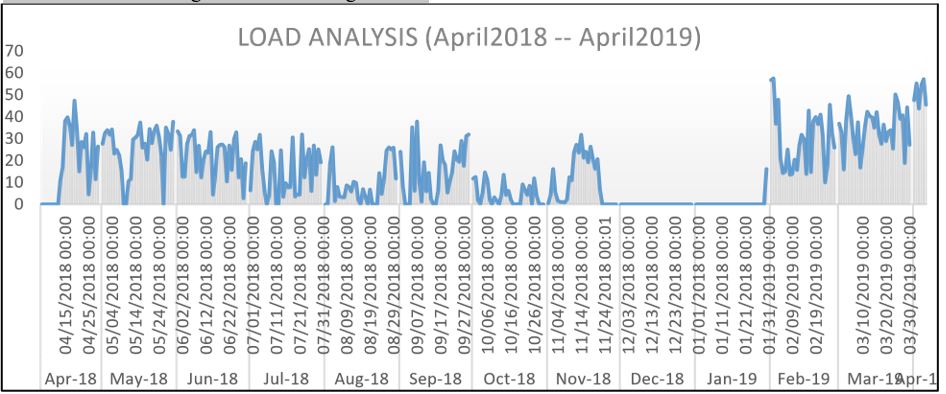Load Transition in Hospital
INTRODUCTION:
Before the installation of PV-System at Bilquis-Mushaf Hospital, in beginning months of 2017, it’s detailed planning and Data collection was taken off. Load calculation and estimation was a very crucial part of this analysis and it was also accurately carried out. Following were the results:
Maximum Calculated Load: Summer (8am – 6pm): 12.48kW
Total Energy consumption-per day: Summers: 200kWh
Total Energy consumption-per day: Winters: 50kWh
After all the estimation & Calculation was completed, following equipment were mutually decided to run the load on PV-System:
- Thirty-Six (36) Solar Panels (300W each) from Canadian Solar to be set-up on the roof of the hospital
- Three (3) Charge Controllers FLEX Max 80 from Outback Power for charging the batteries using solar power
- Twenty-Four (24) 2V, 800Ah, rechargeable batteries to store energy
- One (1) 7kVA DC to Ac inverter to draw power from the batteries and the run the building
PROBLEM STATEMENT:
Since after the installation of PV-system in Bilquis Mushaf Hospital, Rashidabad, changes in load have been witnessed. After approximately one year of installation i.e. in 2018, records and readings continuously showed an increase in the load demand. Average load in 2018 had increased than that of the beginning. This transition of load obliged the team to look into the reasons of increase so the increased load could be manipulated and wisely utilized.
DETAILS:
The point of concern was that, permanent base loads were present in records and were accurately calculated. Minor variations in the load were acceptable but the team had witnessed an increase of almost 10kWh per day. The average energy consumption per day was almost 32kWh in the beginning, which had increased approximately 42kWh in late 2018. Even energy consumption of more than 50kWh was occasionally witnessed.
The loads that were initially connected on the PV-system were changed by team of Orient Energy.
Following are the load details that are connected the system currently:

CHANGE-OVERS:
Main change overs:
- Basement main for all the solar connections in basement.
- Ground main for all the solar connections at ground floor.
• Individual change overs:
- Accounts room changeover in basement for 1 computer set.
- Basement Reception changeover for 1 computer set. iii. Basement Laboratory changeover for 3 devices, 1 computer and 1 fridge. iv. Motor changeover for one suction pump. v. Nursery changeover for 3 sockets.

PROPOSED REASONS:
I multiple in-depth discussions were held in order to look for the reason. Administration of hospital was very frequently asked about any clues but a consistent reply of denial was always received. According to management they had not connected any extra machines to the PV-system. Following assumptions were initially discussed:
- Some unknown machines are being powered from the sockets on PV-system.
- Air-Conditioners have been transferred to PV-system. iii. Number of fans & lights (in use) have increased.
iv. OpticsRe is having some issues in firmware (like our previous experience) due to which readings are being wrongly calculated.
SOLUTION:
Finally after all the discussions and meeting were held on this account, a very beneficial load analysis was done. Annual report for year 2018-19 was imported and graphically plotted on MS EXEL. Following was the resulting trend:

CONCLUSION:
It can be observed from the trend, load changes in a very gradual and natural manner. The hospital has become more operative by time. If initially 70% of the rooms were operating, so now it might have increased to 90% because of increase in No. of doctors, patients etc. Hence, it is concluded that,
This increase in load is a very natural phenomenon due to gradual increase in No. of patients, Doctors, Medical treatments etc. It can also be expected that this load will increase further in future as the hospitals gets more operative.



